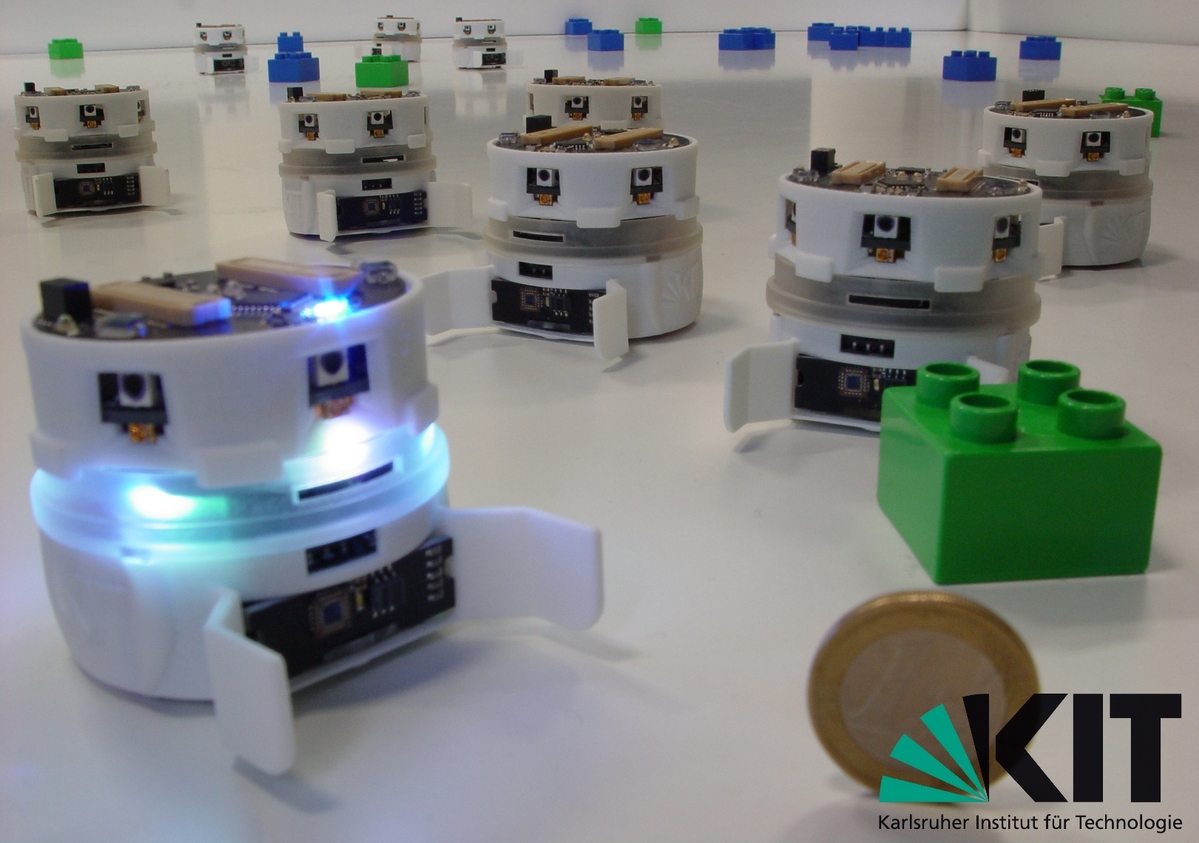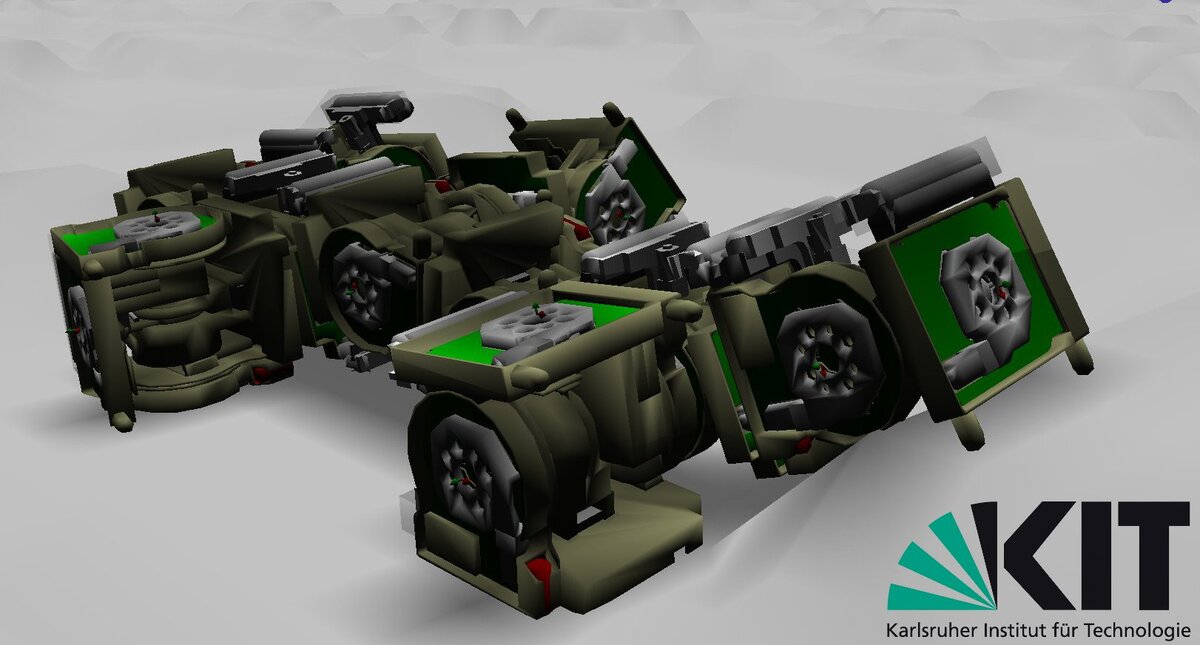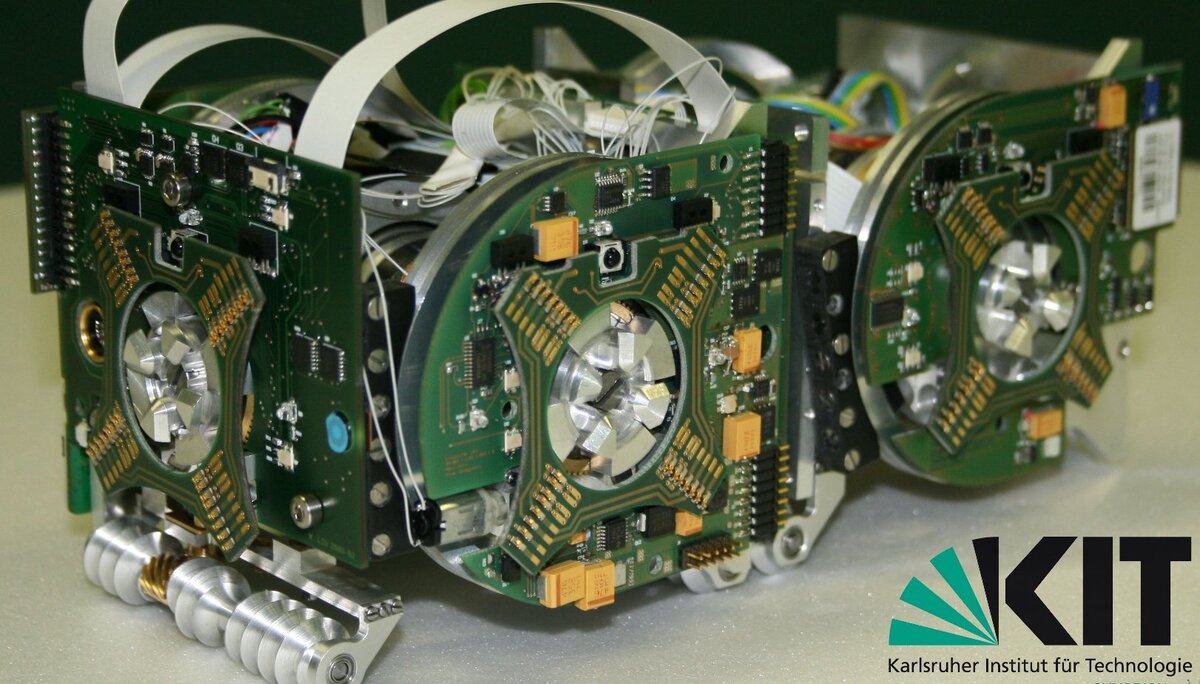Wanda Project
Since 2009. The Wanda swarm robot is a successor of the Jasmine robot. Marc Szymanski, Alexander Kettler and Jens Liedke have developed it within the KIT-CoRoL project. At the IPR there are numerous robots available including an arena for different swarm experiments.
EU-Project SYMBRION
Since February 2008. This project's goal is the research and development of new principles of adaption and evolution for organisms that may consist of a huge amount of single robots. Therefore large-scale swarms of robots are to be enabled to aggregate to a complex organism. Inside of such an artificial life form it is desired for energy and computing resources to be distributed among the single entities, just like in a symbiosis, as each single robot only provides very limited amounts of resources and capabilities. By aggregating to a bigger organism, complex challenges that cannot be coped with by single robots or even swarms of those, may be solvable then.
The projects REPLICATOR and SYMBRION are tightly connected as they use the same robot platforms. In the SYMBRION project biological related questions are of interest. The REPLICATOR project aims more for the technical realization. More.
To the website: here. 
EU-Project REPLICATOR
Since March, 2008. This project focuses on the development of an advanced robotic system, consisting of a large-scale swarm of autonomous mobile robots that are capable of self-assembling into artificial organisms. These robotic organisms possess common energy and information buses as well as reliable legged, wheeled or climbing locomotions, based on modular subsystems which can be autonomously reconfigured. Thanks to the heterogeneity of the elementary robots and their capability to share resources and to communicate, the robotic organisms are able to achieve large computational power, and rich close- and far-range sensing. The energy is autonomously harvested from external power sources.
The main goal of the project is to develop novel principles underlying these robotic organisms, such as self-configuration, self-adjustment and self-learning. The bio-inspired evolutionary approaches and evolvable hardware structures adopted in this project enable the robotic organisms to emerge new functionalities, to develop their own cognitive and control structures and, finally, to work autonomously in uncertain situations without any human supervision.
A possible application of these robotic organisms is to build autonomous sensor networks, capable of self-spreading and self-maintenance in open-ended, even hazardous, environments, due to the organism's extremely adaptive, robust, and scalable capabilities. With over fifty scientists from eight different European countries, the REPLICATOR and SYMBRION projects are together the largest research project in the field of modular robotics in the world. More.
To the website: here. 





